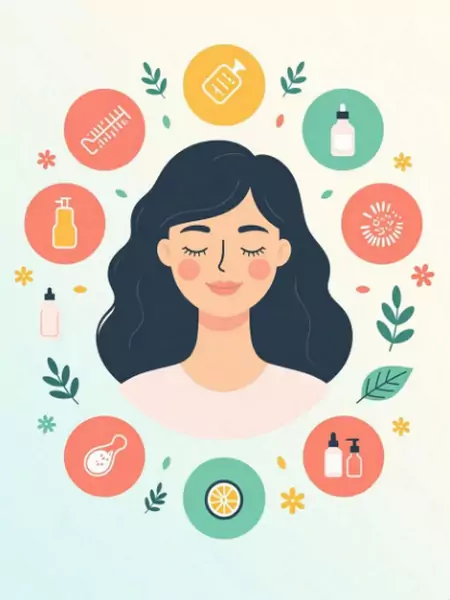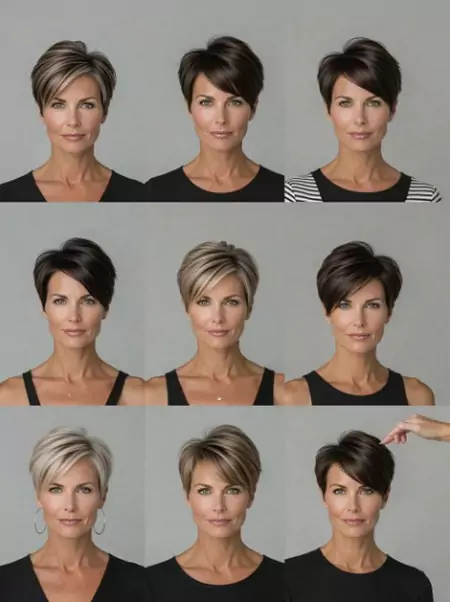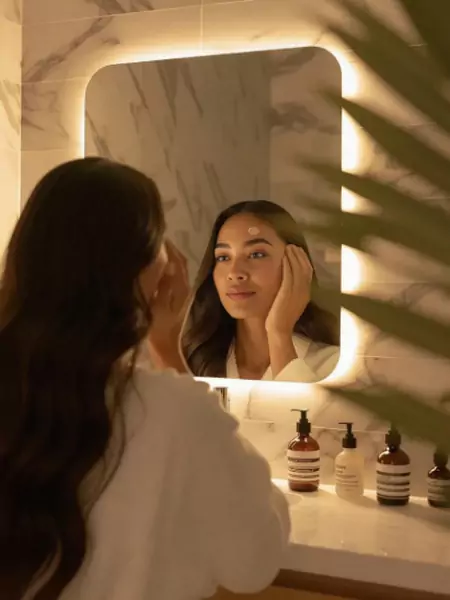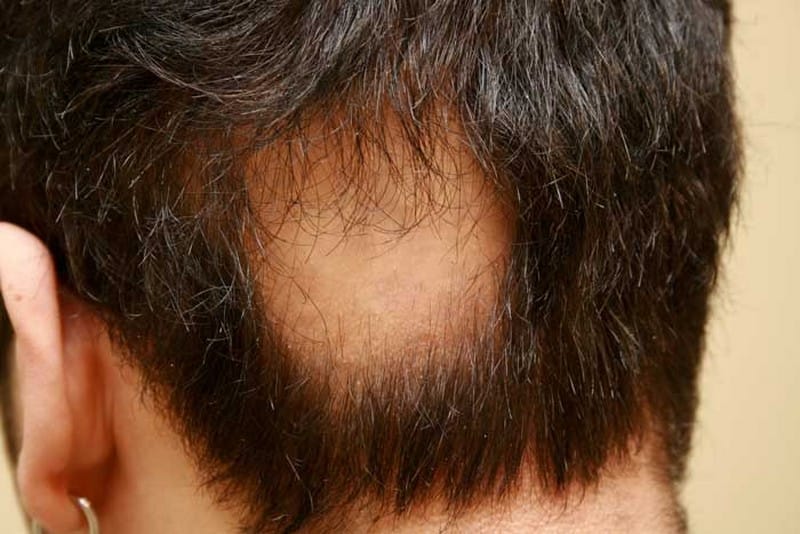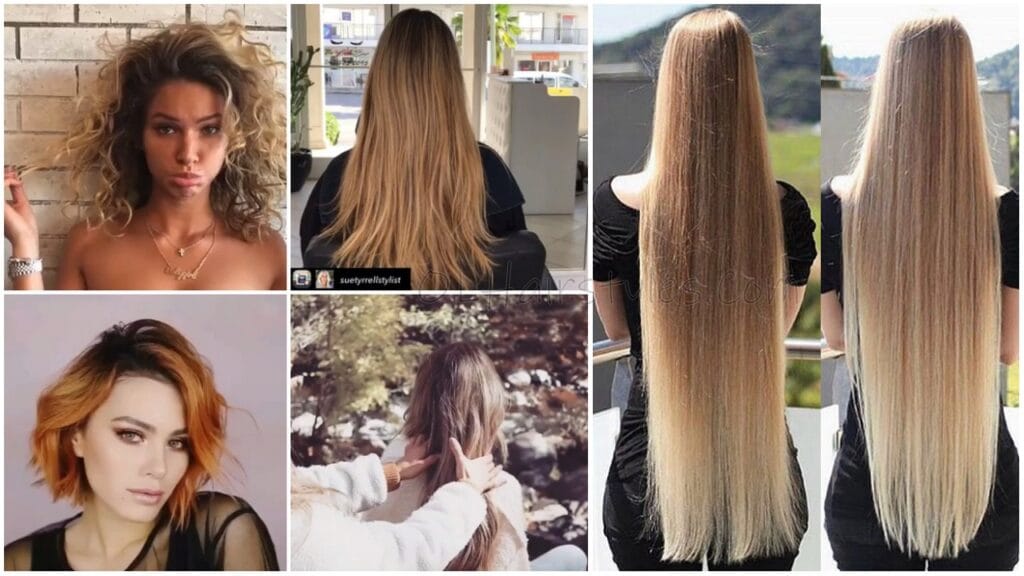The undercut hairstyle is a trendy and bold choice that has gained popularity among men of all ages. This style features shorter hair on the sides and back while leaving the top longer. It’s a versatile look that can be tailored to fit any personality, making it perfect for ladies looking to express themselves.
For women, the undercut can be stylish and functional. Men can sport this haircut in various ways, such as with long hair or short hair. Long hair with an undercut allows for fun styling options, like braids or updos, while short hair undercuts can create a chic, edgy vibe. There are many undercut styles for men, ranging from simple and subtle to intricate designs.
Women’s undercut haircuts can also be customized to suit individual tastes. Some might prefer a classic look, while others might want a more daring design, incorporating patterns or colors. It can be adapted to match different hair textures and lengths.

Whether you’re considering a men’s undercut for a change or seeking a low-maintenance style, this haircut is a great option. It works well with straight, wavy, or curly hair. Plus, it’s easy to maintain, as the shorter sides require less styling time.
Overall, the undercut hairstyle for men is a fantastic way to showcase your style and confidence. With so many options available, you can find a look that feels uniquely you.
Fade Undercut Haircut For Men
The Fade Undercut Haircut for men is a trendy and stylish choice that has gained popularity for its modern appeal. This haircut features short sides that gradually fade into longer hair on top, creating a sharp contrast that draws attention. It’s perfect for men looking to change their look or those who want a low-maintenance style. The fade works beautifully with various hair types, whether you have straight, wavy, or curly hair.
One of the best things about the fade undercut is how versatile it is. Men can experiment with different styles on top, from slicked-back looks to messy textures, allowing for a unique expression of personal style. The fade undercut not only looks great but also fits different occasions, whether for work or casual outings.

Ladies are embracing undercuts in stunning ways, whether they sport them with long hair or go for a short, chic look. Women’s undercuts can be bold, featuring intricate designs, or kept simple for a clean finish. The beauty of the undercut is that it allows both men and women to showcase their individuality.
For women with long hair, a long undercut can add an edgy flair while still maintaining the length on top. This style can be playful and daring, making it a fantastic choice for those who want to stand out. With so many options available, from simple to intricate designs, the fade undercut is a hairstyle that suits anyone looking to express their unique personality with confidence.
Side Swept Undercut
The side-swept undercut is an exciting choice for guys who want a cool and modern look. This undercut hairstyle features shorter hair on one side while the longer hair on top is swept to the side, creating an eye-catching contrast.
It’s a great option for men looking for undercut hairstyles that are both stylish and easy to manage. Whether you’re going for a classic fade undercut haircut or something more daring like a disconnected undercut hairstyle, this style can be customized to fit any personality.

Men with undercut styles can mix in different fades, like a fade undercut for men, to add even more flair. If you’re searching for a fresh male haircut undercut that stands out, the side-swept undercut is worth considering!
Long Undercut Hairstyle
The long hair undercut hairstyle for men is a fantastic choice for those who want a cool and modern look. This undercut hairstyle allows you to keep the length on top while having shorter sides, creating a striking contrast. Whether you choose a simple undercut haircut for long hair or opt for something bolder, like a long hair undercut fade, you can easily make this style your own.

Men with long hair can rock this undercut in various ways, like adding a bit of texture or a side-swept look. It’s a low-maintenance style that works great for any occasion, making it one of the most popular long undercut hairstyles men are choosing today. So if you’re ready to try an undercut for men with long hair, get ready to turn heads with this trendy and versatile hairstyle!
Pixie Cut Undercut
The pixie cut undercut is a cool and stylish choice for men looking to switch up their look. This trendy hairstyle combines a pixie haircut with an undercut, creating a fresh and modern vibe. Pixie hairstyles with undercut can be super versatile, letting you play with different textures and lengths.

If you’re feeling bold, you might try an undercut very short pixie haircut, which is not only eye-catching but also easy to maintain. Even feminine undercut pixie styles are gaining popularity, proving that this haircut can be for anyone who wants to express their unique personality. So, if you’re ready to stand out, the pixie cut undercut could be your new favorite look!
Bob Cut with Undercut
If you’re looking for a trendy way to show off your style, consider a bob cut with an undercut. This hairstyle combines the classic elegance of a bob haircut with the edgy twist of a bob undercut, making it perfect for anyone wanting to stand out.

Stacked bob with an undercut adds even more flair, giving your hair a fuller look on top while keeping the sides clean and stylish. Whether you choose a short bob undercut or a stacked undercut bob, you’ll find that short bobs with undercuts are not only fashionable but also easy to manage. With short bob hairstyles with undercuts, you can express your personality and feel confident in your bold new look!
Slick Back Undercut For Men
The slick back undercut is a popular hairstyle for men that combines a sharp look with a modern vibe. This slick back undercut hairstyle features longer hair on top that’s perfectly styled back, while the sides are neatly shaved or cut short, creating a striking contrast.

Many guys love the slicked-back hair undercut because it not only looks cool but also keeps hair out of the way, making it easy to maintain. Whether you’re heading to a party or just hanging out with friends, the undercut slickback gives you a confident and stylish appearance that stands out. It’s a great way to show off your personality while keeping things fresh and trendy!
Curly Undercut Hairstyle For Men
Curly undercut men have found a way to rock their unique style with the curly undercut hairstyle. This trendy look combines the coolness of an undercut haircut for curly hair with the natural bounce of curly locks. Whether you have short curls or long curly hair undercuts, this style is perfect for showcasing your personality.

The undercut for curly hair men not only keeps your curls looking sharp but also makes them easier to manage. With curly hair undercut male, you can easily stand out in a crowd, whether you’re at a party or just chilling with friends. It’s a fun and stylish way to embrace your curls and feel confident!
Undercut Low Fade Haircut
The undercut low fade haircut is a fantastic choice for guys who want a fresh and stylish look. This haircut combines the coolness of an undercut with the smoothness of a low fade, giving you a clean and modern appearance.

With a low fade undercut, your hair on top can be longer, allowing you to show off your curls or keep it slicked back. The taper fade undercut adds a bit of flair, making it perfect for any occasion. Embrace this trendy haircut and stand out from the crowd!
Bun Undercut for a Man
If you’re looking for a fresh style, the man bun with undercut is a fantastic choice. This undercut man bun hairstyle combines the best of both worlds: the sleekness of the undercut and the laid-back vibe of the bun.

You can keep the top of your hair longer, which lets you show off your curls, or tie it back into a cool bun. It’s a great way to express yourself while still keeping things neat and stylish. With a man bun undercut, you’ll stand out in any crowd and feel confident in your look. So why not give it a try?
Messy Undercut Pixie
A messy undercut pixie is a fantastic hairstyle choice for those looking to blend edgy and chic. This look combines a feminine pixie cut with undercut details, creating a style that’s both fun and bold. With the sides cut shorter, you can keep the top longer, allowing for curls to flow freely or be styled into a playful bun.

It’s a short hair undercut for women that lets you express your unique personality while still looking put together. If you’re ready to stand out and feel confident, this is the perfect hairstyle to try!
Disconnected Undercut Haircut
The disconnected undercut haircut for men is a bold and stylish choice that stands out. This look features short sides and a longer top, creating a striking contrast that gives off an edgy vibe. With disconnected hair, you can play around with different styles—whether you want a messy, carefree look or something more polished.

This haircut is perfect for guys who want to express their individuality and make a statement. If you’re thinking about trying something new, a disconnected undercut could be just the thing to boost your confidence and show off your unique personality!
Men’s Wavy Undercut
The men’s wavy undercut is a trendy choice that helps guys stand out from the crowd. This undercut hairstyle wavy hair combines short sides with longer, flowing waves on top, creating a cool contrast that looks both edgy and stylish. Whether you’re going for a laid-back, messy vibe or a more polished appearance, the undercut wavy hair offers plenty of options to express your personality.

It’s perfect for anyone looking to boost their confidence and show off their unique style. If you want a fresh new look that’s sure to turn heads, give the men’s wavy undercut a try!
Undercut High Fade
The undercut high fade is an awesome hairstyle that gives guys a bold and modern look. With this cut, the sides are shaved very short, while the hair on top stays longer, which creates a striking contrast.
It’s similar to the undercut medium fade and undercut mid fade styles, but the high fade takes it to the next level by starting higher up on the head. Whether you choose a medium fade undercut or a mid fade undercut, these styles all offer a fresh twist on traditional haircuts.

The undercut high fade especially stands out, making it a great choice for anyone wanting to express their unique personality and boost their confidence. If you’re ready to make a statement, this trendy cut is worth a try!
Undercut Pixie Bob Haircut
The undercut pixie bob haircut is a stylish choice for men looking to stand out. This trendy cut features shorter hair on the sides and back, while the top remains longer, giving it a fun and edgy vibe. It’s a fresh twist on classic styles, much like the undercut medium fade or undercut mid fade, but with a unique flair.

The undercut pixie bob allows you to show off your personality and creativity, making it perfect for those who want to make a statement. If you’re ready for a bold change that boosts your confidence, this haircut might just be what you need!
Korean Undercut Hair
The Korean undercut hairstyle is a bold choice for men who want to express their unique style. With shorter hair on the sides and back, and longer hair on top, the undercut Korean gives off a trendy and edgy vibe. This haircut not only looks fresh but also allows you to showcase your personality. If you’re thinking about a change, the Korean undercut hairstyle could be the perfect way to stand out and feel more confident!

Middle Part Undercut
The middle part undercut is a stylish choice for guys looking to mix things up with their hair. This trendy haircut features shorter hair on the sides while leaving the top long enough to create a cool middle part. It gives off an edgy vibe that can help show off your personality.

Whether you’re going for a laid-back look or something more polished, the middle part undercut allows you to express yourself freshly. If you want to stand out and feel more confident, this haircut might just be what you need!
Braid Undercut
The braid undercut is an awesome hairstyle for guys who want to make a statement. This cool cut features short hair on the sides and longer hair on top that you can braid, creating an undercut with braids that look both edgy and stylish. It’s a great way to show off your personality while keeping things fresh and fun. If you’re ready to switch things up, this trendy look might be exactly what you’re looking for!

Comb Over Undercut
The comb-over undercut is a fantastic hairstyle for guys wanting to stand out. It combines the classic look of a comb-over with the modern twist of an undercut, where the sides are cut short while the hair on top is longer.
If you want to take it a step further, you can add a braid undercut, which means you can braid the longer hair on top for a unique style. This undercut with braids is not just cool; it’s a great way to express your personality and keep your hair looking fresh. If you’re thinking about changing your look, this trendy hairstyle could be just what you need!

Pompadour Undercut
The undercut pompadour haircut is a stylish choice for guys looking to stand out. This cool hairstyle features short sides with a longer, voluminous top that you can style up for a sleek look. If you want to add some flair, you could even try a pompadour undercut with braids, giving you a unique way to express yourself. It’s the perfect way to switch up your style and make a statement!
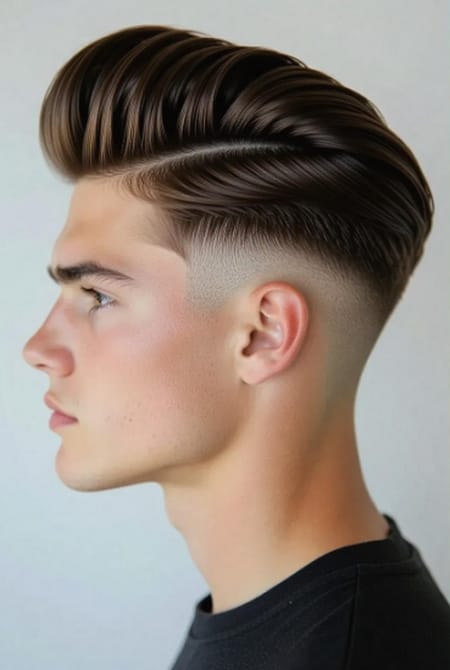
Undercut Fringe
The undercut fringe is a trendy hairstyle that many guys are rocking these days. This style combines the classic undercut with fringe, giving you a cool look that stands out. With short sides and longer hair on top, the fringe can be styled in different ways, whether you want it messy or sleek.
It’s a great way to show off your personality and keep things fresh. If you’re looking to change up your style and make heads turn, the undercut with fringe might just be the perfect choice for you!

Undercut Short Men
Undercut short men have a unique style that can make them stand out in a crowd. The undercut fringe is a popular choice for guys who want to mix things up. With short sides and longer hair on top, this hairstyle lets you show off your personality.

It’s not just about looking good; it’s about feeling confident and fresh. So if you’re a short guy wanting to try something new, the undercut fringe might be just the right move to turn heads and show off your flair!
Asian Hairstyle Undercut
The Asian hairstyle undercut is a fantastic choice for guys looking to stand out with style. This trendy cut features short sides while leaving the hair on top longer, giving you the chance to express yourself in a cool way. With the undercut fringe, you can easily switch up your look, whether you want to rock a slicked-back style or let your hair fall naturally. It’s not just about having a stylish haircut; it’s about feeling fresh and confident every day.

Ponytail Undercut
The ponytail undercut is a super cool hairstyle for guys who want to show off their unique style. This look combines the sharp, clean lines of an undercut on the sides with longer hair on top that you can tie back into a ponytail.
It’s perfect for those days when you want to keep your hair out of your face while still looking fresh and trendy. Plus, the ponytail undercut is versatile—you can wear it sleek and neat or let it be a bit messy for a more laid-back vibe. No matter how you style it, this haircut can help boost your confidence and make you feel ready to take on the world!

Do you want to move away from the undercut or from short to long? With these haircuts, you will look good even in the transitional period.
It’s quick to cut from long to short, but if you want to let your hair grow, you have to be patient. Just let it grow. If only it were that easy! Because you should still have your hair cut now and then so that you look well-groomed during the transition period. Here we show you how you can move from cut to cut and look great doing it.
Goal 1: from close-cropped to short haircut
The starting point: Your hair is shaved all around. For a classic men’s cut, you are missing around 6 cm on the top of the head and 2-3 cm on the sides. With an average hair growth of 1–1.5 cm per month, the undertaking takes a good 4 months.

Only have your sides cut during the transition period.
“There isn’t much transition until the next cut. But it is important that the hairdresser only (!) shortens the contours in between; after all, the top hair in particular should gain in length,” says Alexander Fehrenbach-Voigt, art director at Lippert’s hairdressers in Munich. When the hair grows, it usually stands out as wiry in the first few weeks.
Quick help against the unwanted hedgehog look: Rub a pea-sized dab of styling paste (for example, ‘Clay Wax’ from Hairlust) in the palms of your hands and ruffle it through the top hair with your fingers spread apart,” says the professional. By the way, these foods ensure full hair.
The goal: a timeless short haircut
Persevered? Congratulations! You can style your new short hairstyle in a variety of ways, such as elegantly with a side parting or tousled with wax. Another reason to be happy: the new haircut doesn’t require much effort to look well-groomed.
Goal 2: Get rid of the undercut!
The starting point: shaved sides, long top hair, hard edges. Should the transitions be smoother now? There is no reason to be impatient. “Depending on the length of the top hair, this only takes 6–8 weeks,” says hair professional Alexander Fehrenbach-Voigt. This is how you get to your destination:

The right transition hairstyle after the undercut
The pages now have to grow; the rest stays as it is. That’s why in the next 2 to 3 appointments, the hairdresser only shortens the tips of the top hair and the outermost contours, i.e. the hair above the ears and on the back of the neck. Fehrenbach-Voigt explains: “So that the undercut edge gradually disappears, the transition between the sides and the top hair is slightly frayed each time.” Here, you will find the coolest trendy hairstyles for men.
The goal: a casual short haircut with longer sides
The side sections are about 4-6 cm long and merge seamlessly into the slightly longer top hair. Fine! Then you’ve either reached your goal or you can let your hair grow further, as described below.
Tip: For casual styling like in the photo, pull a side part and then rub a matte pomade such as Kevin Murphy’s “Free Hold” with a medium hold in your hands. Then run your spread fingers through your hair, and you’re done.
Goal 3: from short to long
At least now, you can practice patience. If you want to grow your hair from a short haircut to chin length, you have to let it grow by a good 15 cm. You should plan at least a year for this.
The right transition hairstyle for the initial phase
Many men give up right at the beginning. Because now the project of “growing long hair” is particularly annoying: the bangs keep falling into your eyes and the sides stick out in a trapezoid shape. It’s very easy to prevent this: blow-dry the hair on the top of your head back and style it into a quiff using wax (for example, from American Crew). Then style the sides flat against the head with a dab of hair gel.
Practical: You can use this to easily conceal the short haircut that has grown out in the first 2-3 months and thus create a good basis for your further plans. Here you will find six tips on how to make your hair grow faster.
In the transitional period, it’s time to put your hair behind your ear.
It’s worth persevering! As soon as you can tuck the bangs behind your ear, they will no longer fall into your face. “Now you should clean the contours every few weeks and gradually adjust the length of the sides and top hair so that a uniform length is created over time,” explains Alexander Fehrenbach-Voigt. The best men’s shampoos for every hair type.
Done! If the strands reach your chin, you officially have long hair and our respect—someone has to imitate that much patience. Do you want even more? From now on it will take another nine months to get to the shoulders. Provided you don’t get your hair cut too often. Three months is a good time between hairdressing appointments to quickly gain length and still look well-groomed.
Conclusion: Patience pays off.
If you want to grow your hair, you don’t have to hide it under a hat or cap now and then. On the contrary: Our pictures show that not only the new hairstyle you want, but also the interim solutions along the way can look very good. Sure, you sacrifice a few millimeters each time and maybe reach your goal a little slower than without a haircut at all. But your hair grows healthy and strong.


